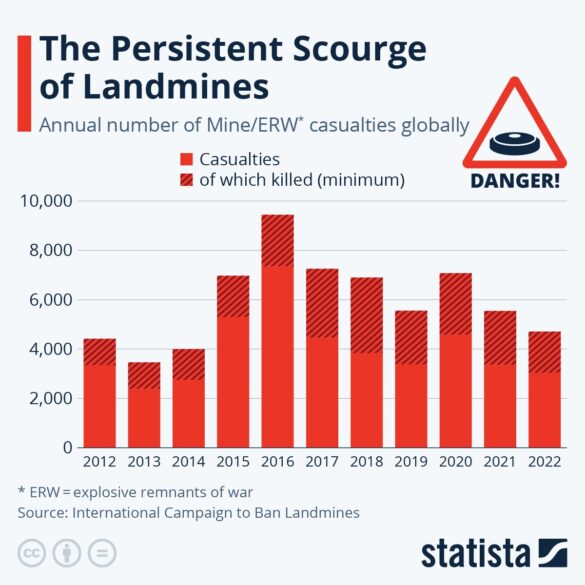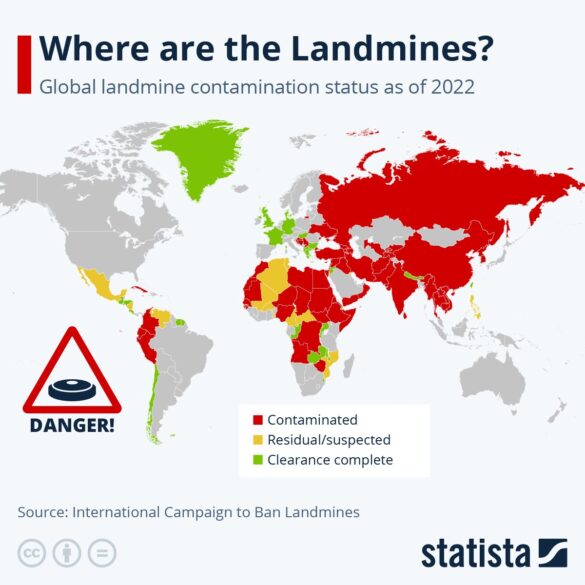By Carol Glatz , Catholic News Service
VATICAN CITY (CNS) — Anti-personnel mines are “devious” weapons that continue to kill innocent civilians and children long after a conflict has ended, Pope Francis said.
“I thank all those who offer their help to assist victims and clean up contaminated areas,” he said at the end of his weekly general audience in the Paul VI Audience Hall Feb. 28.
“Their work is a concrete response to the universal call to be peacemakers, taking care of our brothers and sisters,” he said.

The pope, who was still dealing with a cold, read aloud his remarks about landmines after having aides read his lengthier catechesis and greetings during the audience.
March 1 marks the 25th anniversary of the entry into force of the Ottawa Convention, which prohibits the use, stockpiling, production and transfer of anti-personnel mines and mandates assisting victims, clearing minefields and destroying stockpiles.
Anti-personnel mines, the pope said, “continue to target innocent civilians, particularly children, even many years after the end of hostilities.”
“I express my closeness to the many victims of these devious devices, which remind us of the dramatic cruelty of war and the price civilian populations are forced to pay,” he said.
At least 4,710 casualties of mines and explosive remnants of war were recorded in 2022, the International Campaign to Ban Landmines said in its 2023 report. Civilians made up 85% of all recorded casualties in places where the military or civilian status was known, and children accounted for half of all civilian casualties, where ages were recorded.
Anti-personnel landmines were used by Ukraine, Myanmar and Russia during 2022 and the first half of 2023, the report by the global coalition of non-governmental organizations said.
“Russia has used anti-personnel mines extensively in Ukraine since invading the country in February 2022, resulting in an unprecedented situation in which a country that is not party to the Mine Ban Treaty is using the weapon on the territory of a state party,” it wrote.
Non-state armed groups used anti-personnel mines in at least five countries in 2022: Colombia, India, Myanmar, Thailand and Tunisia and countries in or bordering the Sahel region of Africa, it added.
At least 60 countries and other areas are contaminated by anti-personnel mines.
Eighty percent of the world’s nations have joined the mine ban treaty, and while 33 states remain outside of the treaty, most of them do not use or produce antipersonnel mines, it said.
A small number of countries are actively producing anti-personnel landmines and they are likely to include India, Iran, Myanmar, Pakistan and Russia, The biggest stockpiles are held by Russia, Pakistan, India, China and the United States.

